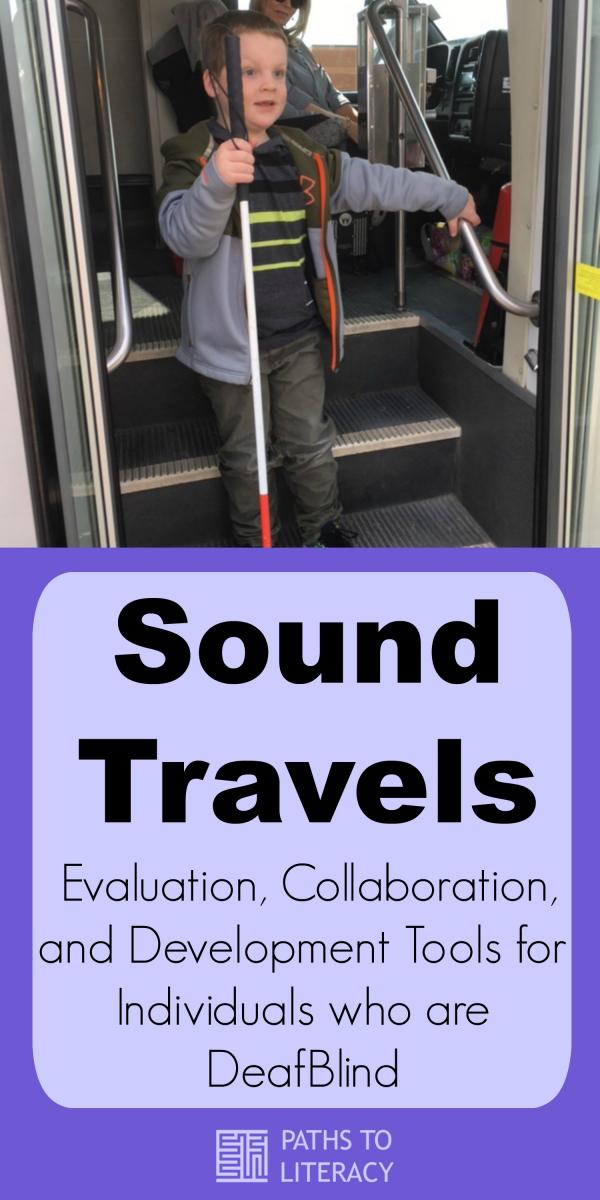Sound Travels: Evaluation, Collaboration, and Development Tools for Individuals who are DeafBlind
Sound Travels: Evaluation, Collaboration, and Development Tools for Individuals who are DeafBlind is a collection of documents designed to aid in evaluating the unique environmental needs of travelers who are deafblind. There are tools to collaborate with other team members such as the Audiologist, resources for understanding the roles of service providers, activities for developing auditory skills, and more.
The collection includes the following sections:
-
Environmental Sound Considerations for the Audiologist and the Orientation and Mobility Specialist
- Discrimination
- Identification
- Localization
- Auditory Landmark, Cues, and Clues
- Echolocation
-
Audiology and Orientation and Mobility Collaboration Tool
- Landmarking, Cues, and Clues
- Echolocation
- Traffic Considerations for Safety in the Community
- Other Skills
-
Developing Auditory Skills
Activities using residual hearing include:
- Distinguishing Sound Sources
- Recognizing Sound Shadows
- Recognizing Sound Masking
- Localizing Sounds
-
Delineation of Roles Related to Safe and Independent Travel for the Student with Deafblindness
Students with deafblindness often have a core team to address their complex needs. These include:
- Audiologist
- Certified Orientation and Mobility Specialist (COMS)
- Intervener
- Families
- Teacher of Deaf and the Hard of Hearing (TDHH)
- Teacher of Students with Deafblindness (TDB)
- Teacher of Students with Visually Impairments (TVI)
-
Tip Sheet for AI (Auditorally Impaired) Teacher
This tip sheet is designed to help the TDHH (Teacher of the Deaf and Hard of Hearing) determine the extent to which a student’s vision and hearing loss impacts his/her ability to move and travel with purpose and safety in the environment of home, school and community. It includes considerations such as:
- Access to Information
- Assessments
- Teaming
- Communication
- Etiology
- Behavior
- Social Issues
- Orientation and Mobility (O & M)
- Transition Planning
-
Working with Audiologists
-
Sample statement from an audiologist regarding O&M


Comments
Peer support and technology
Re: Peer support and technology